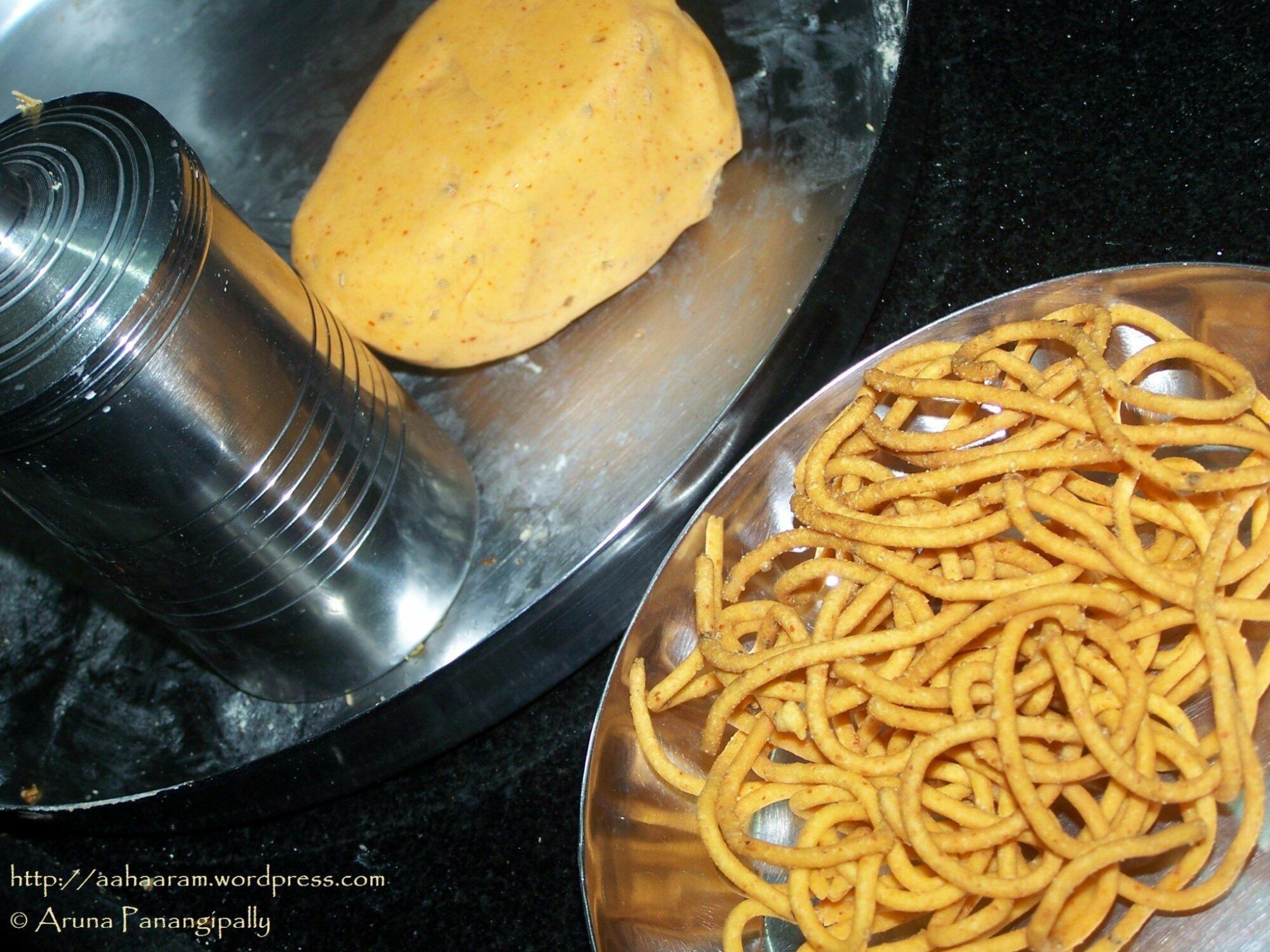Jantikalu are one of these eternally popular “crunchy munchies” that you will find in most Andhra homes. As a child, I used to wait for the time when Amma would say let us make Jantikalu because it meant an afternoon of fun.
Amma would also make a huge batch that would last for more than a week as tiffin for “small recess” in school. 🙂
Equipment
Jantikala Gottam/Murukku Press
Ingredients
- Biyyam Pindi/Chawal ka Atta/Rice Flour – 2 Cups
- Senaga Pindi/Besan/Gram Flour – 1 Cup
- Red Chilli Powder – 2 tsp
- Ghee – 1 tbsp (For vegan version replace with oil)
- Vaamu/Ajwain/Carrom Seeds – 1 tsp
- Salt – 1.25 tsp (or to Taste)
- Oil for Frying – 2 Cups
- Water
Method
- Sieve the rice flour, gram flour, salt, and chilli powder together.
- Add the carom seeds to the sieved flour mix.
- Mix well.
- Heat the ghee to melt it completely.
- Add to the sieved flour and mix well.
- Gradually add water and create a firm, but malleable dough.
- Divide the dough into four equal parts.
- In a kadai/wok, heat the oil till it is hot.
- Turn down the heat to medium-low.
- Fill the jantikala gottam with one part of the dough.
- Using a circular motion, slowly press the jantikalu into the hot oil to form a round shape.
- Over medium heat, fry till the Jantikalu are light brown.
- Gently turn over and fry till golden brown. Each batch takes about 10 to 15 minutes.
- Lift out of the oil and let the oil drain out.
Or
Place on an absorbent kitchen towel. - Store in an air-tight container.
- Enjoy with a hot cup of tea or coffee! 🙂
Tips
- The dough should be slightly softer than chapati atta so that it passes easily through the jantikalu gottam/murukku press.
- Beware of making the dough too soft as then it will simply absorb lots of water during the frying process and not be crisp but oily and soggy.
- Taste the dough to ensure there is enough salt. It should feel as though salt is “just short of being enough.” The salty taste is enhanced after frying.
- Make the jantikalu as soon as you make the dough otherwise it dries out.
- To ensure that the hot enough, roll a pinch of dough into a small bead/ball using your fingers and drop it into the oil.
- It should first settle at the bottom and then rise slowly to the top as it fries.
- If the ball of dough rises immediately to the top, then the oil is too hot.
- When the oil is too hot, the Jantikalu will fry from the outside but will remain uncooked or soft on the inside.


I remember my mum preparing them. I just love them. Super crunchy and tasty! Good one!
Really great information about Jantikalu. Thugojipagojifoods.com provide Jantikalu online from where people can experience the original handmade taste of Sweets.